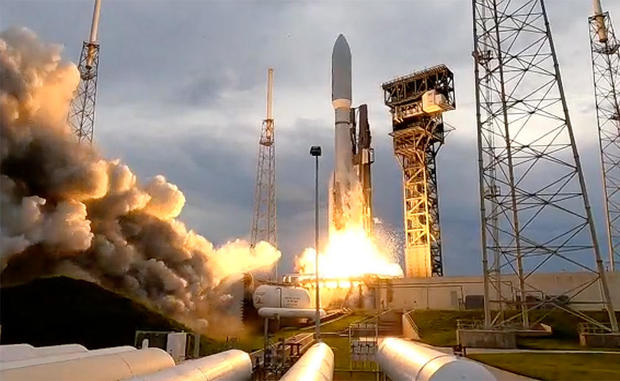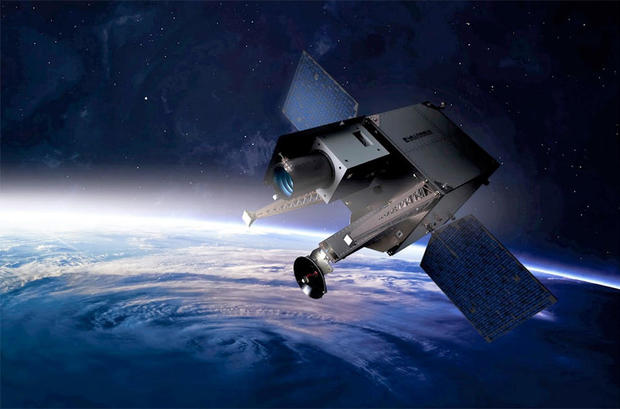Atlas 5 launches Space Force satellite to test early warning technology
After waiting out cloudy weather, the U.S. Space Force launched two satellites atop an Atlas 5 rocket Friday to test ballistic and hypersonic missile early warning and tracking technology and to deploy a maneuverable spacecraft carrying an unknown number of classified payloads.
Already running a day late because of stormy weather, the $1.1 billion USSF-12 mission got off to a ground-shaking start at 7:15 p.m. EDT when its United Launch Alliance rocket thundered to life with 2.3 million pounds of thrust from its first stage engine and four strap-on boosters.
Trailing a spectacular jet of flaming exhaust, the 196-foot-tall rocket rapidly climbed from pad 41 at the Cape Canaveral Space Force Station, knifing through low clouds and quickly disappearing from view as it streaked away to the east over the Atlantic Ocean.
Eleven minutes later, the Aerojet Rocketdyne engine powering the rocket's second stage completed the first of three planned firings designed to put the two satellites in a circular orbit 22,300 miles above the equator. The trip was expected to take about six hours, ending early Saturday with the satellites' deployment from the Centaur second stage.
Satellites at such geosynchronous altitudes take 24 hours to complete one orbit and thus rotate in lockstep with Earth, allowing continuous hemispheric views and enabling use of stationary ground antennas to relay data and commands.
The Wide Field of View Testbed satellite, or WFOV, features an infrared sensor developed by L3Harris that will be evaluated to determine its ability to both detect and track ballistic missiles and more maneuverable hypersonic weapons.
The second satellite, known as USSF-12 Ring, is a space truck of sorts, equipped with six ports to accommodate instruments, sensors or small deployable satellites. What might be aboard for the USSF-12 mission was not revealed.
As for the WFOV satellite, "Space Force's number one mission is the missile warning and missile tracking mission," said Col. Brian Denaro of Space Systems Command. The USSF-12 mission "is an important first step in that priority mission area."
The WFOV spacecraft is not intended to serve as an operational early warning satellite. Instead, it will test the new sensor system and techniques for processing the huge amounts of data it will generate to help "inform" designers of follow-on satellite systems.
"The threat is certainly evolving at an unprecedented fast pace that we haven't seen before," Denaro said during a pre-launch briefing. "We're looking at a range of targets and missiles in the hypersonic domain that are far more maneuverable, they're dimmer, they're harder to see."
"And that's requiring a new approach to how we both detect and then track all these missiles throughout their flight," Denaro added.
Space Force is already developing Next Generation Overhead Persistent Infrared — OPIR — satellites that eventually will replace current Space-Based Infrared System, or SBIRS, early warning satellites.
Lockheed Martin holds a $4.9 billion contract to build three OPIR geosynchronous satellites while Northrop Grumman is providing two lower-altitude polar satellites under a separate $2.4 billion contract.






